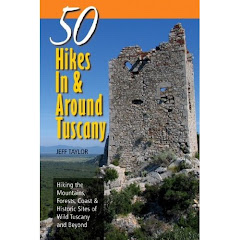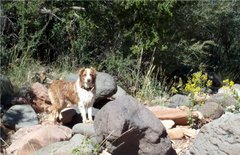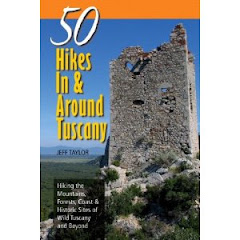Distance: About 6 miles (10 km)
Difficulty: Moderate
Elevation: 5100 - 6000 feet (1555 - 1830 m)
Season: Most of the year (watch for snow in winter and monsoons in summer)
The Dragoon Mountains are one of those spectacular Madrean sky islands located in southeastern Arizona. Not as high as Mount Graham, the Chiricahuas, or the Santa Catalinas, it more than makes up for that with spectacular granite formations that rise above the paper-flat Sulphur Springs valley below.
The area in the center of the range is called Cochise Stronghold, because it is in this labyrinth of granite formations that Chief Cochise and his Chiricahua Apaches hid and survived during the many years that the U.S. Army tried to capture and destroy the band. Once driven from the Dos Cabezas and Chiricahua range, these mountains provided what they needed. Yet, when Army platoons would enter the range looking for them, they would fade away into the rocks. Eventually, Cochise negotiated a peace settlement and the tribe was moved to the Apache reservations to the north. However, Cochise was buried in these mountains, but his grave has never been found.
The trail starts near Sunsites, AZ are spawling development of scattered retirement homes along the Willcox Playa about 35 miles southwest of Willcox, AZ. There are brown signs that show where to go from I-10 and all other routes along the way. The trail starts at the Cochise Stronghold campground at the end of the road.
The trail starts on the "nature trail" in a mixed oak-pinyon pine forest. There is beargrass, yuccas, and sotols all along the way. The trail follows effemeral Cochise Creek, crossing it several times. The trail rises ever so slowly with granite walls rising on both sides.
After approximately 1 mile the trail reaches Cochise Spring, now just a green algae filled pool next to the creek. The trail then goes along a beautiful slot canyon and then begins climbing. At the 2 mile mark you will reach Half Moon Tank, where a dam on the creek created a muddy pool and cottonwoods line the banks.
Less than a mile later at the top of the hill, the most spectacular view of all comes into focus. Between two amazing sets of granite rocks is a view into the Sulpher Springs valley. Further up, as you approach the saddle at the 3 mile mark, you will arrive at Stronghold Divide and another view opens up to mountains in the distance.
There is a fence here and this is a great place to turn around. You can continue down the otherside, where it meets a jeep track in 1.75 miles.
As you return, you will start to notice amazing rock formations you missed on the way up!















































